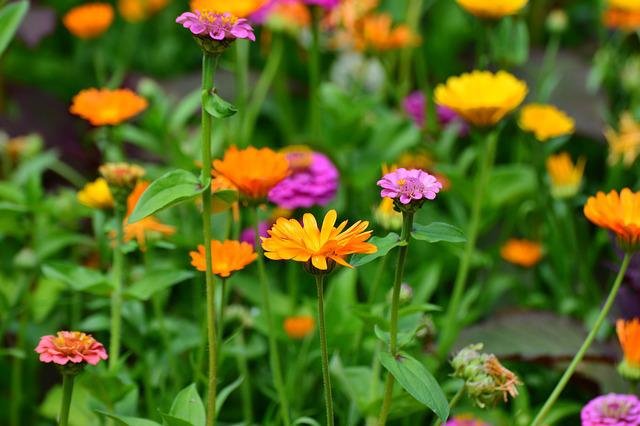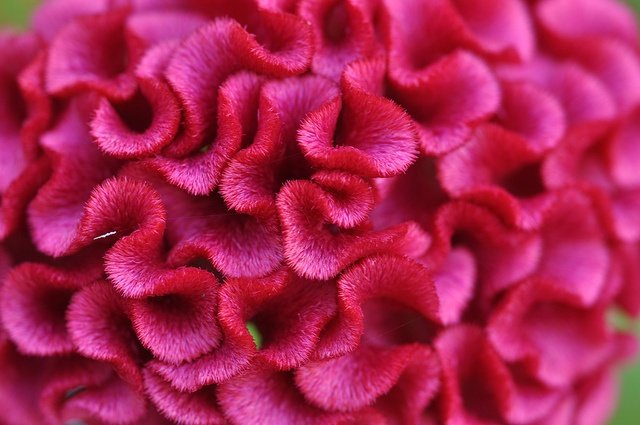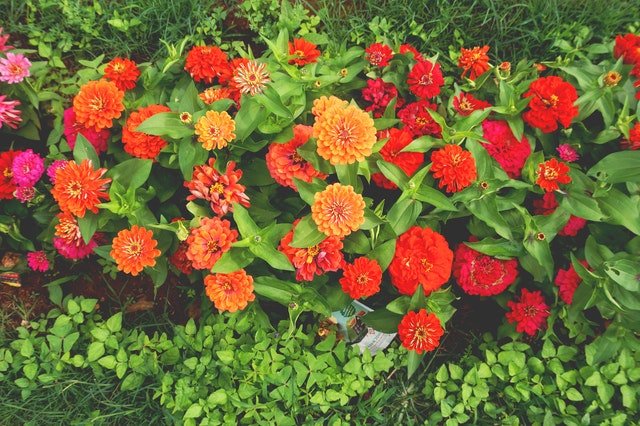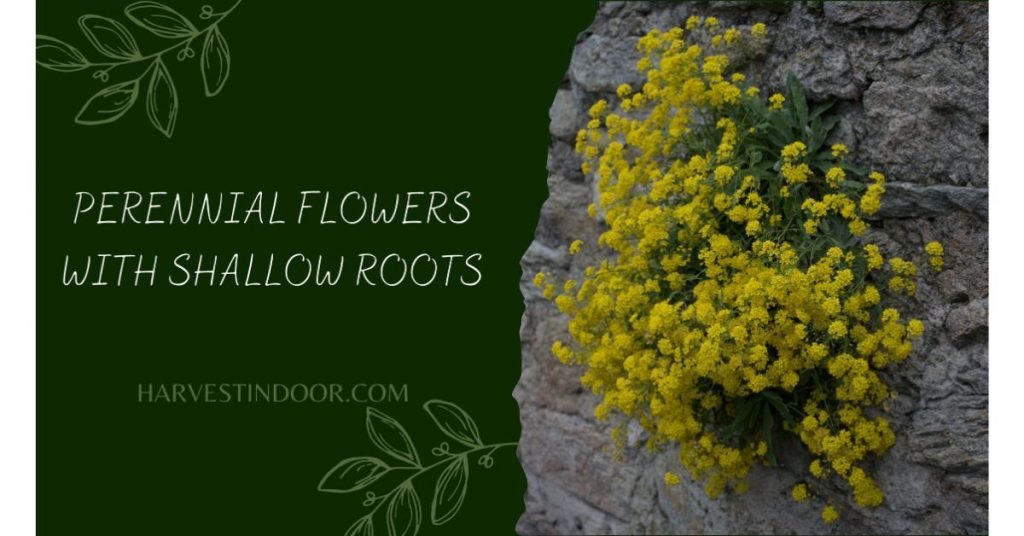When you’re looking to add some color to your garden, red flowers are a great option. Many plants produce red flowers, including tall plants. There are many benefits to having tall plants with red flowers in your garden. Not only do they add color and beauty, but they can also provide shade and help to keep the soil moist. In this article, we will discuss why some plants produce red flowers and list some of the best options for tall plants with red Flowers.
There are many tall plants that produce red flowers. Some of the best options include: Flamboyant, Red Maple,Eastern Redbud, Southern Magnolia, Coral Tree, Bottlebrush, Hibiscus, Scarlet sage, Cardinal flower, Red hot poker, Trumpet creeper, Fire bush, Weigela, Crape-Myrtles, Panama Rose, Chilean Fire Bush, and Flame Tree.
Table of Contents
Flamboyant Delonix regia
The Flamboyant tree (Delonix regia) is a stunning and well-known flowering tree, often admired for its vibrant, flamboyant display of red or orange flowers.
The Flamboyant tree is a medium-sized deciduous tree that can grow to a height of 20 to 40 feet (6 to 12 meters) or even taller under ideal conditions. Its canopy can spread to a similar width, creating a broad and umbrella-like shape.
The most striking feature of the Flamboyant tree is its brilliant and showy display of flowers. The most common flower color is fiery red or orange, and it typically blooms in clusters. The flowers have five petals and a distinctive shape, which makes them stand out and gives the tree its name.
The Flamboyant tree is known for its seasonal flowering, which usually occurs in late spring or early summer. The tree sheds its leaves before flowering, creating a striking contrast between the colorful blossoms and the bare branches.
Red Maple (Acer rubrum)
The Red Maple (Acer rubrum) is a beautiful deciduous tree native to North America, known for its vibrant red foliage in the fall.
Red Maples are medium to large-sized trees, typically reaching heights of 40 to 60 feet (12 to 18 meters) in urban landscapes. In their natural habitat, they can grow even taller, up to 100 feet (30 meters).
The leaves of Red Maples are simple and opposite, featuring a classic, three-lobed shape. The leaves are typically green in the spring and summer, turning brilliant shades of red in the fall, which is where the tree gets its name. The autumn display of red foliage is a highly sought-after feature.
Red Maples produce small, inconspicuous red or greenish flowers in early spring before the leaves emerge. The flowers are typically wind-pollinated and are not as showy as those of some other ornamental trees.
Eastern Redbud (Cercis canadensis)
The Eastern Redbud (Cercis canadensis) is a small to medium-sized deciduous tree native to eastern North America. It is renowned for its delicate, pink to reddish-purple flowers, which bloom in early spring, before the leaves appear.
Eastern Redbuds typically grow to a height of 20 to 30 feet (6 to 9 meters) and have a rounded or vase-shaped canopy.
The heart-shaped leaves of the Eastern Redbud are medium green and typically turn yellow in the fall before dropping. The leaves create an attractive backdrop for the profusion of spring blossoms.
The standout feature of the Eastern Redbud is its abundant, pink to reddish-purple flowers. These blossoms appear along the tree’s branches in clusters, covering the tree in a spectacular floral display. The flowers are especially beautiful because they emerge before the leaves, creating a striking contrast with the bare branches.
Coral Tree (Erythrina species)
Coral Trees, which belong to the genus Erythrina, are a group of strikingly beautiful flowering trees known for their distinctive coral-like, tubular red or orange flowers. They are native to tropical and subtropical regions and are popular for their ornamental value.
Coral Trees are typically small to medium-sized deciduous trees. They have a somewhat open growth habit with branches that may be covered in thorns. The bark of some species is often gray and rough.
The most notable feature of Coral Trees is their eye-catching, tubular flowers that resemble coral branches. These flowers come in various shades of red, pink, and orange, depending on the species and cultivar. The flowers are typically borne in long, pendulous clusters and are rich in nectar, attracting pollinators like hummingbirds.
Southern Magnolia (Magnolia grandiflora)
The Southern Magnolia (Magnolia grandiflora) is a magnificent evergreen tree native to the southeastern United States. This iconic tree is known for its large, fragrant, and showy white flowers and glossy, dark green leaves.
Southern Magnolias are large trees that can reach heights of 60 to 80 feet (18 to 24 meters) or more. They have a wide, pyramidal shape and provide substantial shade.
The tree is renowned for its large, fragrant, and showy white flowers. These blossoms, which can be up to 12 inches (30 centimeters) in diameter, have a waxy texture and exude a sweet, lemony scent. The flowers typically have six petals and a center filled with golden stamens.
Southern Magnolias are native to the southeastern United States, including areas from North Carolina to Florida and west to Texas. They are often found in both upland and lowland areas, including forests and swamps.
Bottlebrush (Callistemon species)
Bottlebrush (Callistemon species) is a genus of flowering shrubs and small trees native to Australia and nearby regions. They are named for their cylindrical, brush-like flower spikes that resemble a bottle brush.
Depending on the species and cultivar, Bottlebrush plants can range in size from small shrubs to small trees. They typically grow to heights of 6 to 20 feet (1.8 to 6 meters).
The most recognizable feature of Bottlebrush plants is their unique and colorful flower spikes. These spikes, which can be red, pink, or sometimes even yellow or white, are made up of numerous individual tubular flowers. They have a striking, bottle brush-like appearance and are known for attracting pollinators like birds and bees.
The unique shape of the flowers makes them particularly appealing to nectar-feeding birds, including honeyeaters, lorikeets, and other species. Bees and other pollinators are also attracted to the nectar-rich blooms.
Hibiscus (Tall Plants With Red flower)
Hibiscus plants can grow to be quite tall, depending on the variety. Some varieties can reach up to 10 feet in height, while others are more compact and only grow to be a few feet tall.
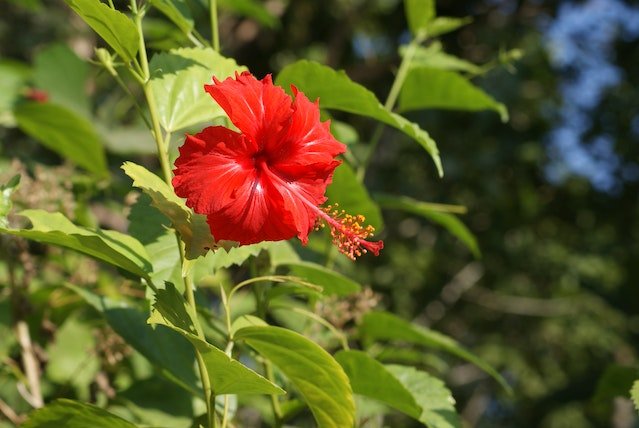
There are several things you can do to encourage your Hibiscus to grow taller. First, make sure you plant it in a well-drained soil mix and water it regularly. Second, fertilize your Hibiscus regularly with a high-quality fertilizer. Third, prune your Hibiscus regularly to encourage new growth. Finally, give your Hibiscus plenty of sunlight – at least six hours per day.
The colors of Hibiscus flowers can vary widely, depending on the variety. Some Hibiscus flowers are white, while others are yellow, pink, red, or purple. The colors of Hibiscus flowers can also change over time – for example, a white Hibiscus flower may turn pink as it matures.
Scarlet sage
Scarlet sage (Salvia coccinea) is a tall, striking annual that produces brightly colored red flowers. It is often used as a companion plant in gardens, as it can add height and visual interest.
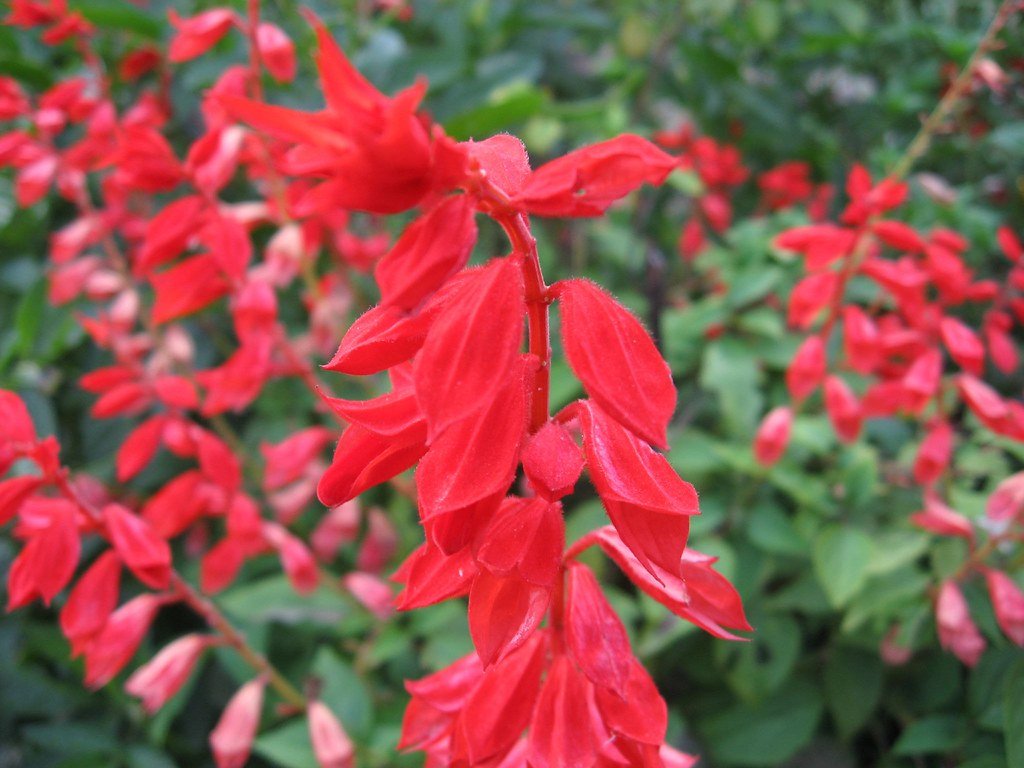
Scarlet sage can grow up to three feet tall, and its flowers range in color from deep red to pinkish-red. While it is a fairly tolerant plant, it does best in well-drained soil and full sun.
To encourage tall growth, provide ample space for the roots to spread and keep the plant well watered. Deadheading spent flowers will also promote continuous blooming throughout the season. With proper care, scarlet sage can add stunning color and height to any garden.
Cardinal flower
Cardinal flowers are tall plants with red flowers that can reach up to six feet in height. They are native to North America and can be found in wetlands and woodlands across the continent. Cardinal flowers get their name from their vibrant red color, which is reminiscent of a cardinal’s feathers.
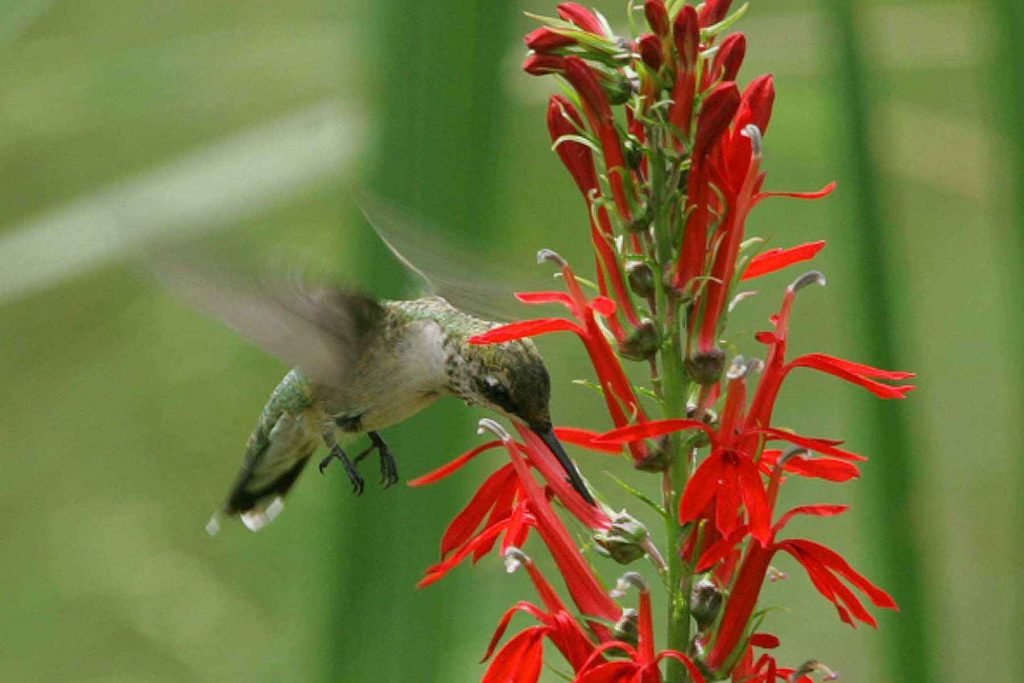
The flower’s red color is due to the presence of anthocyanins, which are pigments that absorb blue light. Cardinal flowers usually bloom in the summer and fall, and they are an important food source for bees and other pollinators.
To encourage tall growth, cardinal flowers need full sun and moist soil. When planting, make sure to space the plants at least two feet apart so that they have room to grow. With proper care, cardinal flowers will thrive and provide your garden with beauty and color for years to come.
Red hot poker
Red hot poker plants are tall plants that grow well in most climates. They can be started from seed, but they are more commonly started from transplants. These plants do best in full sun and well-drained soil.

They are also quite a drought tolerant. Red hot poker plants need very little care once they are established. However, if you want them to grow tall, you will need to water them regularly and fertilize them with a high-phosphorus fertilizer.
The flowers of the red hot poker plant are red, orange, or yellow. They are borne on tall spikes that bloom in late summer or early fall.
Trumpet creeper
Trumpet creepers are tall plants that can grow up to 30 feet in height. They have red flowers that bloom in late summer and fall. Trumpet creepers can be planted in full sun or partial shade and do best in moist, well-drained soils. Trumpet creepers can be propagated from seeds or cuttings.

To promote growth, trumpet creepers need ample moisture and nutrients. Fertilize trumpeter creepers monthly with a balanced fertilizer during the growing season. Trumpet creepers will tolerate pruning, so you can trim them back if they get too tall.
Fire bush
The Fire bush (Hamelia patens) is a tall plant with striking red flowers. It is native to tropical and subtropical regions of the Americas, but it can be grown in other parts of the world as well.

The Fire bush can reach a height of 6-8 feet, making it one of the taller plants in its family. To encourage growth, provide the plant with full sun and well-drained soil. Water regularly, but do not allow the soil to become waterlogged. The plant will produce flowers throughout the summer months.
The flowers are typically red, but they can also be orange or yellow. Once the flowers fade, the plant produces small berries that are popular with birds and other wildlife.
Weigela
The Weigela is a tall plant that can reach up to 12 feet in height. It has beautiful red flowers that bloom in the springtime. You can make your Weigela grow taller by trimming it back in the fall. This will encourage new growth in the spring.

The Weigela flower’s colors can range from light pink to dark red. The most common color is reddish-pink. The flowers are about 2 inches wide and have 5 petals. They are borne in clusters of 3-5 blooms. The Weigela is a native of China and Korea. It was introduced into Europe in the 19th century and into North America in the early 20th century.
Crape-Myrtles (Genus Lagerstroemia)
Crape-myrtles, belonging to the genus Lagerstroemia, are a group of flowering trees and shrubs known for their beautiful, showy flowers and attractive bark.
Crape-myrtles come in various sizes and forms, depending on the cultivar. They can range from small shrubs to medium-sized trees. The bark of crape-myrtles is smooth and mottled, with peeling layers of bark that add interest, especially during the winter.
One of the most distinctive features of crape-myrtles is their showy, crepe-paper-like flowers. These flowers come in a wide range of colors, including white, pink, lavender, purple, and red, depending on the cultivar. They areproduced in dense, pyramidal clusters at the tips of branches and can last for an extended period during the summer.
Crape-myrtles are valued for their beautiful and long-lasting summer flowers. They are often used as specimen plants in gardens and landscapes and are popular choices for street plantings, parks, and residential yards. They can also be pruned to create hedges or shaped into multi-trunked trees.
Panama Rose
The Panama Rose (Arachnothryx leucophylla), also known as the White-leaf Panama Rose or the Bridal Bouquet, is a beautiful flowering shrub that is native to Central America, including Panama and Costa Rica.
The Panama Rose is an evergreen shrub that typically grows to a height of 6 to 10 feet (1.8 to 3 meters). It has an upright and bushy growth habit with dense foliage.
The Panama Rose produces clusters of small, fragrant, white to pale pink flowers with prominent yellow stamens. The flowers are often compared to the appearance of bridal bouquets, which is another reason for one of its common names, “Bridal Bouquet.”
The shrub typically blooms year-round, but the peak flowering season is often during the warmer months.
Chilean Fire Bush
The Chilean Fire Bush (Embothrium coccineum), also known as the Chilean Fire Tree, is a striking evergreen tree or large shrub native to South America, particularly in Chile and Argentina.
Embothrium coccineum typically grows as a multi-trunked tree or large shrub and can reach heights of 20 to 40 feet (6 to 12 meters). The tree has an upright and open growth habit, and its branches are covered in needle-like leaves.
The Chilean Fire Bush is renowned for its stunning, fiery-red tubular flowers. These bright red flowers are clustered along the branches and are produced in abundance, giving the tree its common name. The flowers are typically borne during spring and early summer.
Embothrium coccineum is usually found in its natural habitat in the temperate rainforests and mountains of southern Chile and adjacent regions of Argentina. It is adapted to the cool, moist conditions of these areas.
Flame Tree
The Flame Tree (Brachychiton acerifolius), also known as the Illawarra Flame Tree, is a striking and iconic tree native to eastern Australia.
Flame Trees are medium to large-sized trees that can grow to heights of 50 to 80 feet (15 to 25 meters) or more in their natural habitat. When cultivated in gardens or urban areas, they are often smaller due to pruning and environmental conditions.
The most distinctive feature of the Flame Tree is its spectacular display of bright red or orange bell-shaped flowers. These flowers can cover the entire canopy of the tree, creating a stunning and fiery appearance. The flowers typically bloom during late spring or early summer, and the tree can appear as if it’s on fire when in full bloom, hence the name “Flame Tree.”
This tree has a spreading and open growth habit with a broad canopy, making it a valuable shade tree in gardens and urban settings.
Conclusion
One of the reasons that some plants produce red flowers is because it helps them to attract pollinators. The color red is known to be a good attractant for bees and other insects. This is beneficial for the plant because it helps to ensure that its pollen will be spread and that it will be able to reproduce. In addition, the color red is also known to be a good deterrent for predators. This means that the plant is less likely to be eaten by animals, which can help it to survive and thrive.
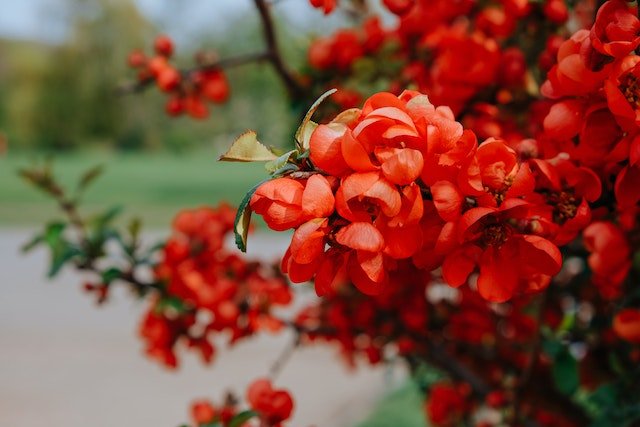
Where does the red color in flowers come from? The red color in flowers is caused by a pigment called anthocyanin. This pigment is responsible for giving many flowers their red, purple, and blue hues. It is produced by the plant in response to various environmental factors, such as sunlight, temperature, and soil acidity. The higher the level of anthocyanin in the flower, the deeper the red color will be.
Tall plants with red flowers are not only beautiful but they also attract pollinators like bees and hummingbirds. They add height and interest to any garden.

Gardening is my passion and growing plants indoors has always been a stress relief for me. Grow a banana tree in my apartment once (although failed to produce bananas).


